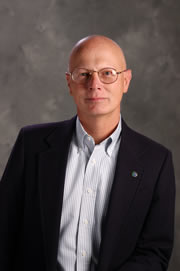Minnesota Moving Ahead: Report and Recommendations of the Transportation Finance Advisory Committee (TFAC)
By Ken Buckeye

The Minnesota Transportation Finance Advisory Committee, formed by Gov. Mark Dayton in January 2012, delivered its final report and recommendations to the Governor and Legislature late last year. The committee’s charge was to develop recommendations for the next 20 years to fund and finance the state’s highways, roads, bridges and public transport systems, as well as its air, rail and port facilities to ensure continued high quality of life and economic competitiveness for Minnesotans in the coming decades.
The TFAC concluded in their report that the ability of state’s transportation systems to meet the needs of a growing population will continue to be a key driver for the state’s business climate. Investments in transportation must support an environment in which Minnesota businesses can grow and ensure that the state continues to be an attractive location for companies looking to expand and for the workforce to locate. Investments in transportation should be a priority for the state in the context of economic development and overall competitiveness.
Due to a number of forces such as increasing fuel efficiency and development of alternative energy, transportation funding for roads faces a serious decline in revenues. However, significant additional revenue is needed to maintain a competitive advantage. For this reason, the TFAC also concluded that all transportation authorities will have to work smarter and do more with existing resources using project selection processes that deliver high return-on-investment projects with cost-effective strategies. The anticipated future funding gap must be addressed with an investment framework that is sustainable and equitable.
The committee considered the implications of three future transportation funding, financing and performance scenarios for Minnesota:
- Status Quo;
- Maintaining Current Performance; and
- Economically Competitive/World Class.
Under the current funding scenario (status quo), estimated funding receipts for all modes and systems are expected to be in the range of $39.3 billion during the next 20 years. Under the second scenario, the system/modal needs and the projected funding gap to maintain current performance is estimated to be around $21.2 billion above the status quo or baseline amount. To achieve a world-class, economically competitive system in the next 20 years will require an estimated $50.6 billion to $54.6 billion in additional revenue above baseline revenue projections.
Recommendations
Recommendations were offered to the Governor and decision-makers to address the funding gap in four primary areas: highway system needs, transit needs, local government needs and project-level funding solutions. The recommendations offered include:
- Increasing the motor vehicle registration fees to raise revenue by 10 percent;
- Increasing the per-gallon excise tax rate on motor-fuels (two options), plus indexing to generate $15.2 billion in new revenue;
- Adding $0.005 to the existing $0.0025 cent sales tax for transit in the Twin Cities metropolitan area;
- Capturing the remaining leased vehicle sales tax from the state general fund;
- Increasing by $32 million annually the allocation to Greater Minnesota;
- Expanding the option of the wheelage tax for 80 counties in Greater Minnesota, including raising the cap limit for 87 counties;
- Enabling the local option for the formation of Transportation Improvement Districts;
- Enabling local option sales taxes (without a referendum requirement) for transportation in 80 counties;
- Expanding regional transit capital levy in the Twin Cities metropolitan area;
- Expanding MnPASS in Twin Cities;
- Employing “value capture” concepts around transportation improvements;
- Exploring tolling, public-private partnerships and monetizing assets; and
- Continuing state role in general obligation bonding for local roads and bridges, transit, ports, passenger rail, freight rail and safe routes to school.
Conclusion
In completing their work, the TFAC recommended that the state of Minnesota pursue the “Economically Competitive/World Class” option in order to repair and modernize the state’s transportation infrastructure. If the system is allowed to decline through insufficient funding, the committee warned, irreparable damage may occur to the state’s economy. The consequences of that inaction are clear and predictable.
In addition to helping Minnesota compete economically for jobs and talent, an Economically Competitive/World Class system will continue to enhance our high quality of life by connecting people to everything that matters — jobs, education, healthcare, entertainment, shopping and recreation and more. A high-performing, efficient and reliable transportation system, maintained at optimal levels and funded through sustainable means, is essential to supporting a vibrant economic climate that will keep Minnesota moving ahead in a smart direction.
Posted 3/29/2013

